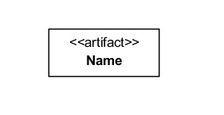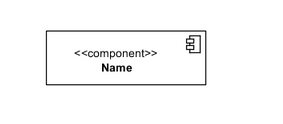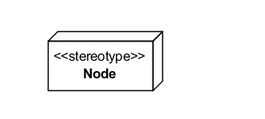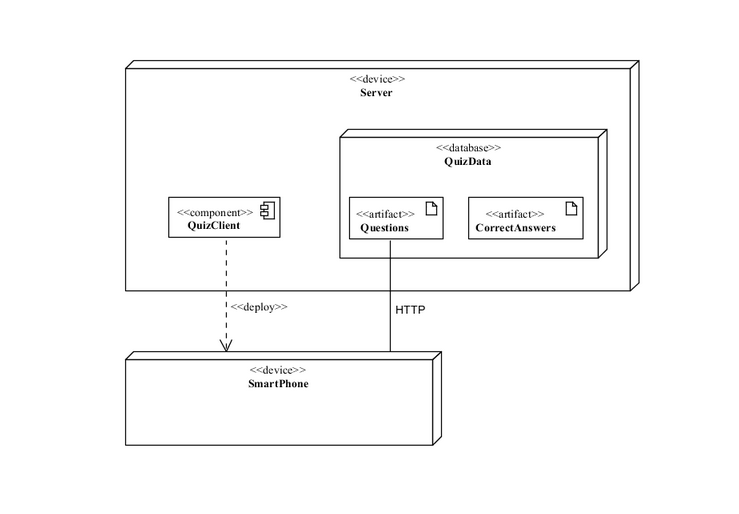CS345 Exam2 (Part 2 revision)
1/46
There's no tags or description
Looks like no tags are added yet.
Name | Mastery | Learn | Test | Matching | Spaced |
|---|
No study sessions yet.
47 Terms
Development Environment:
The hardware and software that are used to (design and) implement a software product
Testing Environment:
The hardware and software that are used to test (usually integration testing and system testing) a software product
Production Environment:
The hardware and software system that the user interacts with through the software product
Physical Architectures
a realization of a software product as artifacts
An Important Note regarding Physical Architectures:
A product's physical architecture is distinct from its logical architecture
Characteristics of Physical Architectures
Where is the software installed?
Where is the software executed?
Where are user configurations and data stored?
Local device
Central device(s)
Hybrid
The Rare Archetypes:
Mobile Agents
The software is stored on the user device and executed on the shared device (using data from one or the other)
The software is stored and executed on one device (either the user device or the shared device) but the user data is stored on another
Archetypal Physical Architectures
Mainframe:
The software product is installed on and executes on a central device, and is accessed from the user's device
Configuration information for each user and user data is stored on the central device
Archetypal Physical Architectures
Personal:
The software product is "permanently" installed on the user's device (e.g., personal computer, phone, tablet) and executes on that device's processor
If the device has multiple users, configuration information and user data are associated with each user
Archetypal Physical Architectures
Shared:
The software product is "permanently" installed on a shared storage device but executes on the user device's processor
Configuration information for each user and user data are stored on the user's device
Archetypal Physical Architectures
Cloud:
The software product is temporarily delivered to the user's device and executes on that device's processor (e.g., applets, WWW apps)
Configuration information for each user and user data is (mostly) stored "in the cloud"
Archetypal Physical Architectures
The Hybrid Architectures:
Some components of the system (e.g., classes) may be stored/executed on one device while others might be stored executed on another
Some data may be one one device and some data may be on another
Activities in the Deployment Process
Release:
Prepare the product for the subsequent steps (i.e., assemble the parts/resources/artifacts and create a distributable package)
Activities in the Deployment Process
Install:
Transfer the product from the development environment to the production environment
Activities in the Deployment Process
Activate:
Start all of the executable components
Activities in the Deployment Process
Deactivate:
Stop the executable components
Activities in the Deployment Process
Uninstall:
Remove the product from the production environment
Adding Updates to the Idealized Process
The Issue:
All or part of an installed product may need to updated
Adding Updates to the Idealized Process
Some Complications:
It may or may not require deactivation and reactivation
It is important to be able to "undo" an update and return the product to its previous state
Adding Updates to the Idealized Process
An Implication:
Design and implement with updates in mind
Purpose of Deployment Diagrams:
To model a physical architecture
Elements of a Deployment Diagram:
Artifacts - a physical manifestation of a non-software element of a software system (e.g., files)
Components - a software element of a software system (e.g., an application)
Nodes - computational resources (i.e., a physical device or an execution environment such as a virtual machine)
Artifacts:

Components:

visual representation of a Node

Visual Representation of Relationships
Communication Paths:
A solid line between elements
Visual Representation of Relationships
Static Deployment:
An artifact/component is placed in a node
Visual Representation of Relationships
Dynamic Deployment:
A dependency arrow (a dashed arrow with the stereotype <<deploy>>) connects the artifact/component to the node
Deployment Diagram

Types of Support
Professional:
The person helping is employed by the provider of the software product
Types of Support
Community:
Users of the system helping others
Types of Support
Hybrid:
A community system in which the professionals participate
Methods of Providing/Delivering Support
Channels:
Telephone
Electronic Mail
Chat/Messaging
Social Network
WWW "Forms"
Methods of Providing/Delivering Support
Interaction:
Synchronous
Asynchronous
Support Tracking/Management
Purpose:
Accept, prioritize, assign, track, and log requests for support
Support Tracking/Management
Common Terminology:
Call Management System
Ticketing System
Levels/Tiers of Support
The Concept:
Provide different levels of support services to different stakeholders (usually for different fees)
Levels/Tiers of Support
Defining Tiers:
Hours of Support (e.g., 24/7, M-F)
Time to Engage (e.g., within 5 minutes, same-day)
Priority/Severity of the Request
Types of Maintenance (ISO/IEC 14764)
Corrective
Adaptive
Perfective
Preventive
Frequency (Maintenance)
Agile Processes:
Tend to deploy more frequently so maintenance activities tend to occur more frequently
Frequency (Maintenance)
Heavyweight Processes:
Tend to deploy Less frequently so maintenance is less frequent but no less significant
Why Maintenance is Expensive
Endemic Reasons:
Successful products are in the field for decades so huge costs are bound to accrue
Why Maintenance is Expensive
Other Reasons:
As a product is modified its structure deteriorates
Maintenance Tradeoffs
Related to Availability:
Maintenance improves a product but may make it unavailable
Maintenance Tradeoffs
Related to Quality:
There are often "elegant" solutions and "quick and dirty" solutions
Who is Involved in maintenance?
The original development team
A maintenance team